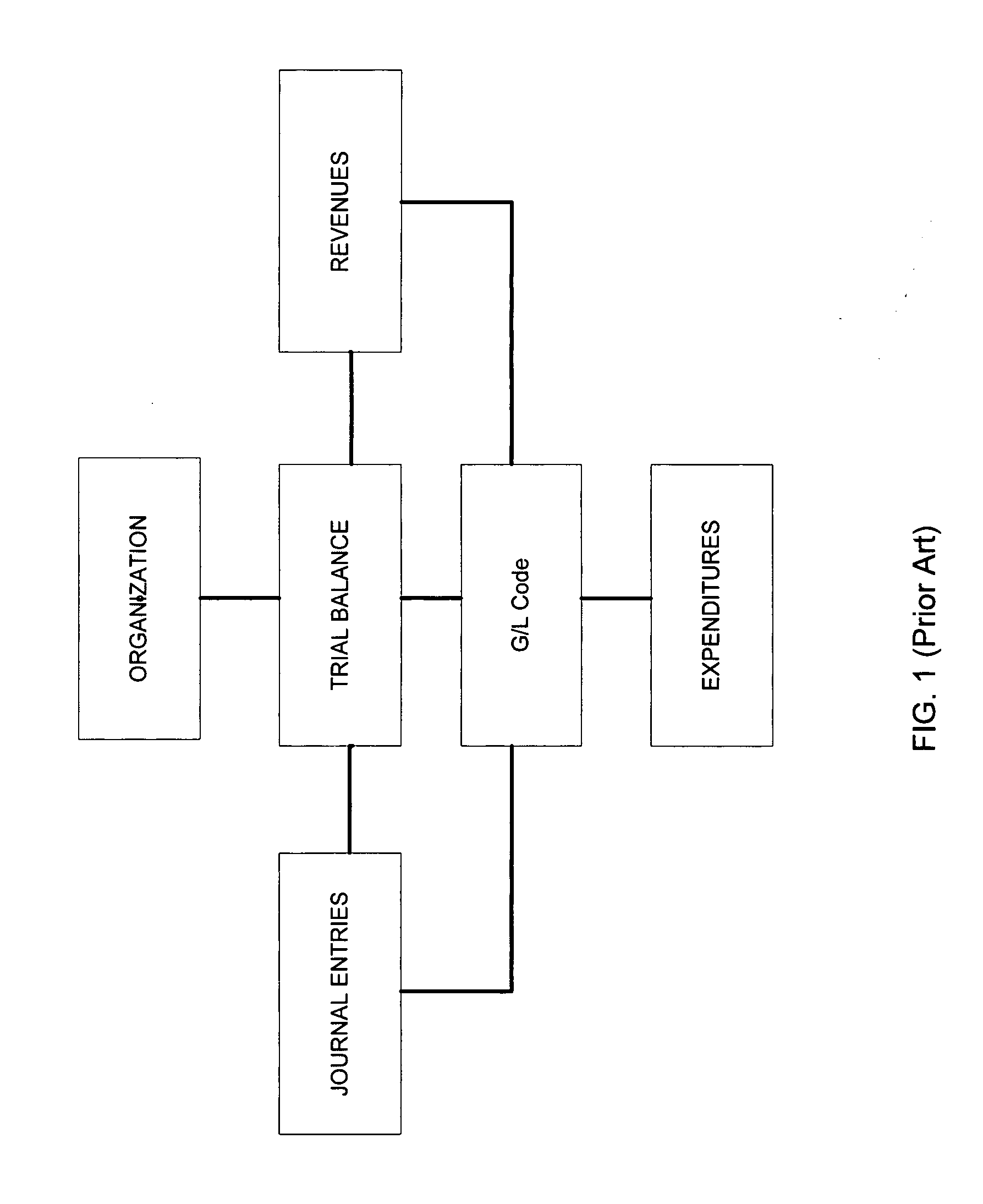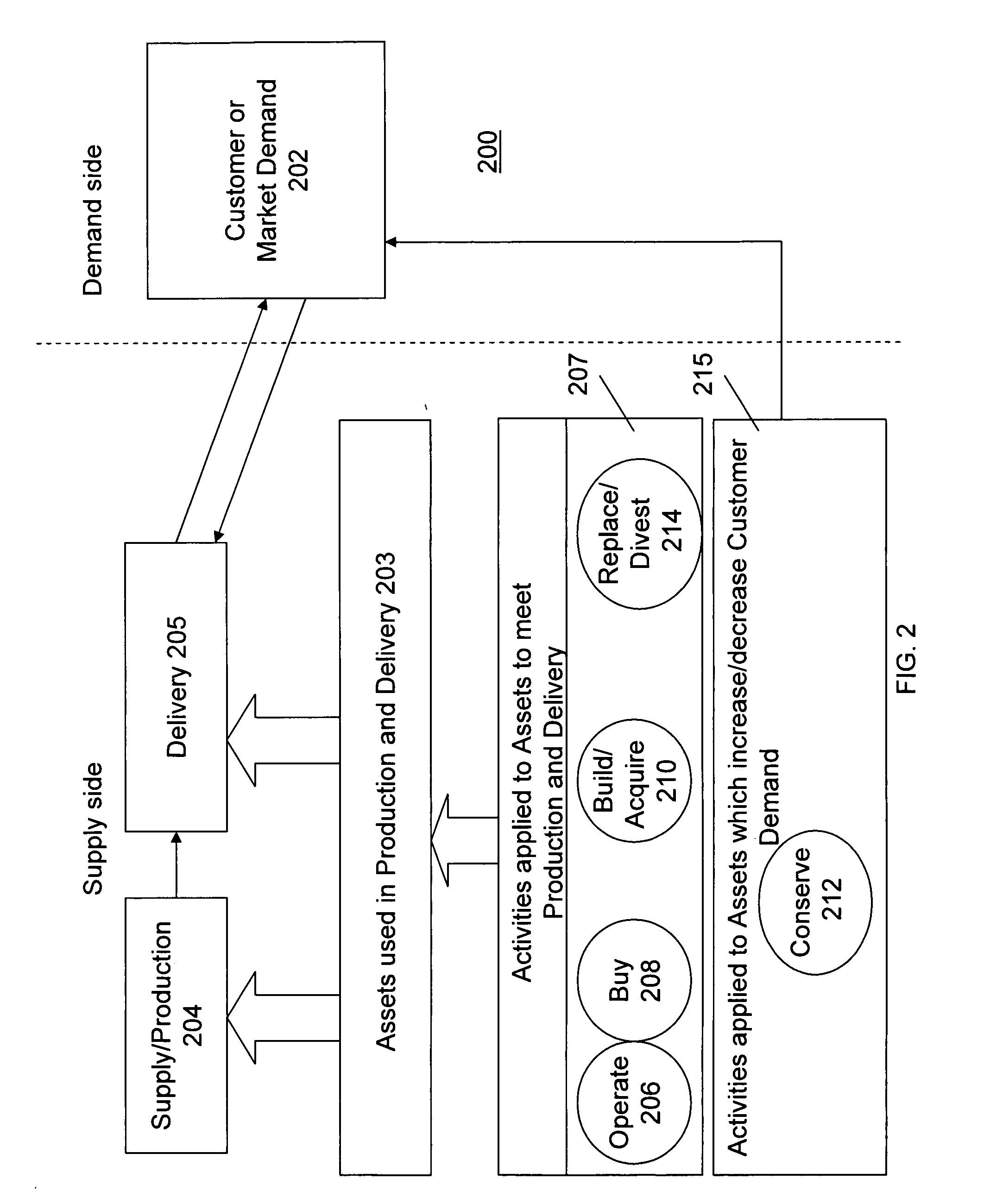System and method for modeling an asset-based business
a technology of asset-based business and system, applied in the direction of instruments, electric digital data processing, resources, etc., can solve the problems of limiting the type of equipment item model to modeling, and introducing new costs and reporting requirements
- Summary
- Abstract
- Description
- Claims
- Application Information
AI Technical Summary
Benefits of technology
Problems solved by technology
Method used
Image
Examples
Embodiment Construction
[0038]In the following description like numerals refer to like structures in the drawings.
[0039]The present invention relates generally to an asset investment planning approach that captures and uses market information related to projected customer demand, safety, environmental and regulatory requirements, with engineering information related to asset condition, capacity, reliability, and maintenance requirements, and financial information related to market pricing, debt, long-term value, and return obligations.
[0040]An advantage of the present approach is that incorporating effective asset-based planning into the enterprise planning processes aids the optimal allocation of spending to enhance value and manage risks. It also increases the levels of rigor and consistency in planning processes, thereby improving stakeholder confidence in plans as well as supporting effective governance and transparency.
[0041]Asset investment planning requires an understanding of the aspects of product...
PUM
 Login to View More
Login to View More Abstract
Description
Claims
Application Information
 Login to View More
Login to View More - R&D
- Intellectual Property
- Life Sciences
- Materials
- Tech Scout
- Unparalleled Data Quality
- Higher Quality Content
- 60% Fewer Hallucinations
Browse by: Latest US Patents, China's latest patents, Technical Efficacy Thesaurus, Application Domain, Technology Topic, Popular Technical Reports.
© 2025 PatSnap. All rights reserved.Legal|Privacy policy|Modern Slavery Act Transparency Statement|Sitemap|About US| Contact US: help@patsnap.com



